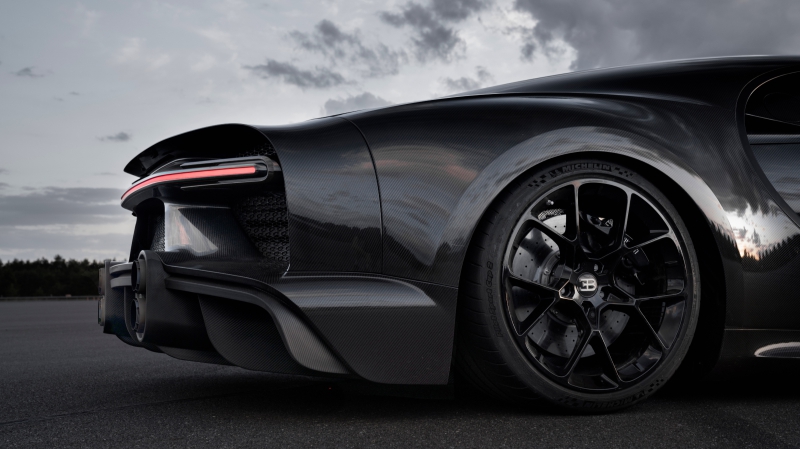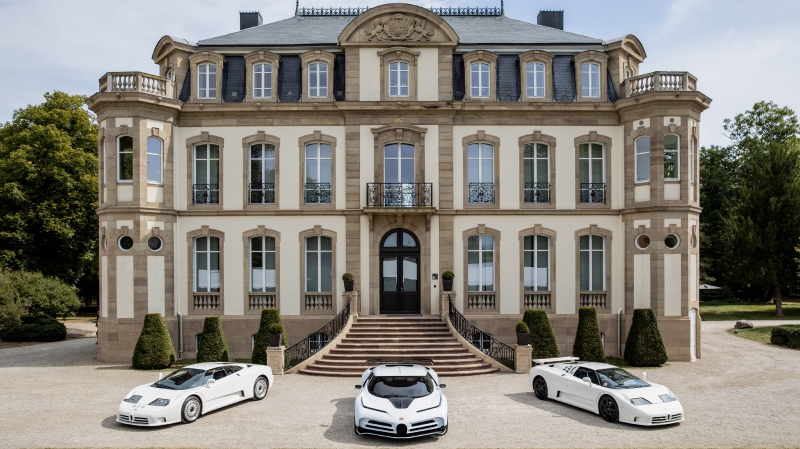How fast is the Bugatti Chiron? That has been a question Bugatti has been artfully dodging for years. This wasn’t because Bugatti couldn’t outdo Ferdinand Piech’s tour de force, the Veyron. Rather it was because Michelin was yet to deliver a tyre capable of satisfying the OHS gods. Nothing strikes fear into German engineering than Momma Merkel’s bureaucracy.
It was only recently that the French-tyre maker delivered that the pieces of the Chiron’s high-speed puzzle came together. Even with tyres that would be able to stand the rotational forces in excess of 480km/h, Bugatti had to rework the Chiron itself. Working with Dallara engineers, Bugatti reportedly took six months to rework the Chiron’s body.
A long stretch for the record

It wasn’t as though the engineers could depend on the Chiron’s mighty W16 quad-turbo engine for more go-faster juice. Power gains from the engine were going to be scarce, with the engineers only managing a relatively small increment from 1120kW to 1176kW. Because of that, Bugatti’s engineers reshaped the Chiron’s body to help it, soldier, through the exponentially rising air resistance.
To that end, engineers stretched the Chiron’s tail, lengthening the car from 4.54m to 4.79m. A static rear wing replaces the standard adjustable item. Not only was the rear diffuser extended, it was reshaped to accommodate repositioned exhausts, which improved airflow. Up in front, the prototype sported large front winglets and perforated front fenders. Significant tweaks, but necessary for the Chiron to surge unhindered to its top speed goal.
Cracking 300mph

WhilThe result of which is this sinister longtail prototype you see here. A masterpiece that would be known as the Bugatti Chiron Super Sport 300. A land-going carbon-fibre rocket ship that blasted its way around Volkswagen’s Ehra-Lessien test track to a record-setting 304.77mph or 490.48km/h. Finally, Bugatti had smashed the fabled 300mph barrier.
While the record run was verified by Germany’s TÜV, the elongated Bug won’t be going into the record books. Bugatti only ran the Chiron Super Sport in one direction, rather than the record-validating back and forth runs. Nevertheless, that single run was enough for Bugatti themselves to call it a day, explain why the Chiron could go faster in places where the air is thinner than the air around the Ehra-Lessien, suspend further production car speed record attempts on their part, and declare themselves king of the world. Good job.
No more attempts

Even with Koenigsegg and Hennessey stepping up to challenge, Bugatti looks to be in no rush to do a proper attempt. Or even stretch for the 500km/h prize that lay so tantalisingly close. Bugatti’s president, Stephan Winkelmann, himself a man obsessed with self-image, isn’t heeding the small-time players gnawing at Bugatti’s heels. Perhaps Bugatti has caught cold feet. Apprehensive that even with the safety preparations and Ehra-Lessien’s controllable environment, gunning for the title isn’t worth the risk. As the Chiron Super Sport 300 gets greenlit with only the TÜV-certified run to show, perhaps Bugatti is in the right in putting a stop to it.
Ever since smashing Ferdinand Piech’s 400km/h top speed target, Bugatti realised that they had worked themselves into a corner. Where do you go once you have established yourself as the maker of a car as fast and as supremely competent as the Veyron? Bugatti explored the potential of a luxury four-door sedan, but the 16C Galibier never quite convinced customers or the management. Unlike its contemporaries, nobody recognised 21st century Bugatti as anything other than the maker of the world’s fastest supercar. The most obvious and logical answer would be a faster Veyron.
Building a faster Bugatti Veyron

But going one-up on the Veyron and its future successors was going to be an increasingly difficult and costly task. The Veyron itself was developed at immense cost. Its development costs were so over the top that the Volkswagen Group reportedly lost money on every Veyron made. The Veyron wasn’t just cutting-edge, its engineers were working in uncharted territory. The struggles the engineers had to go through to get the Chiron to 300mph perfectly epitomises the challenge.
Repeating this feat for every successor isn’t healthy. Not when the likes of Ferrari, Lamborghini, and Porsche were easily making a buck without a care for speed records. These cars were easily making headlines with its focus on lap times rather than outright speed. Only small bit players looking to make audacious claims were throwing the gauntlet at the giant. It looks embarrassing for a big company like Bugatti to even entertain such potentially dangerous antics. Winkelmann himself shut any further discussions about production speed records on Bugatti’s part, saying “We have shown several times that we build the fastest cars in the world. In the future, we will focus on other areas.”
The shape of things to come

Already Winkelmann has applied the golden touch he gained from his tenure at Lamborghini to produce rebodied special editions. The La Voiture Noire 57SC Atlantic tribute is proof that you don’t need speed to maintain its prestige. As a brand, it would be interesting to see where he will take it to next. Where will he guide Volkswagen’s crown jewel in a company that has Lamborghini and Porsche in its fold? Imagine if Bugatti’s expertise were aimed towards developing something a little more relevant to the modern world while being over-the-top.
What is certain though, is that no matter where Winkelmann chooses to steer Bugatti towards, it better be well and clear of the shadow of that 300mph mark.

